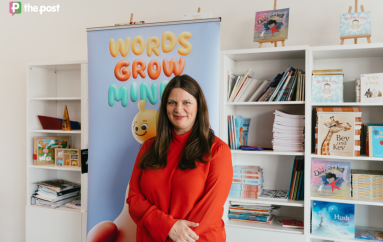Local space company to hit new heights
An Adelaide-based company researching how to combat antibiotic resistance by sending payloads off-planet has acquired a balloon launch provider specialising in the deployment of satellites to the edge of space.

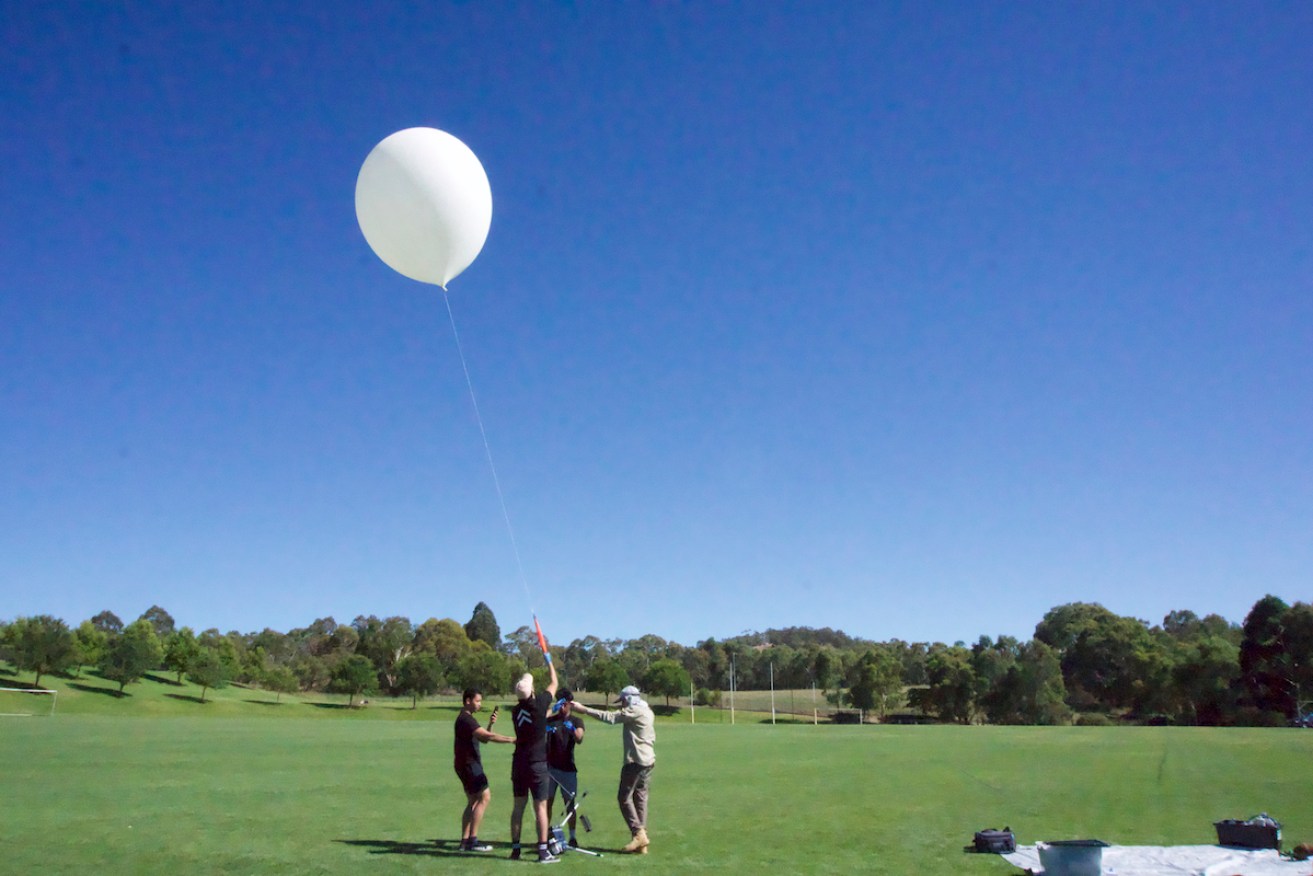
The Up&Up team launching a balloon into space last year. Photo: Supplied.
The capabilities of Adelaide space biology research company ResearchSat will ascend following its purchase of another local outfit – Up&Up Space.
Based out of the University of South Australia’s Innovation Collaboration Centre (ICC), ResearchSat straddles the pharmaceutical and space industries with its life-science research satellites that harness microgravity environments in hopes to develop 10 new drugs by 2035.
Aware of the expenses associated with a fully-fledged launch into space, ResearchSat co-founders RaviTeja Duggnini (CEO) and Jibin Jeffrey Dhanaraj (CTO) acquired Up&Up from entrepreneur Austin Lovell to test their equipment and to ensure it was launch-ready for clients down the line.
Though Up&Up’s huge balloons don’t make it all the way into space, the height they can reach – around 30 to 40kms – gives ResearchSat a “near space environment”, and about 15 seconds of microgravity during which the company can test components.
Bringing Up&Up’s launch capabilities in-house is the continuation of a partnership between the two companies which have been working together since Lovell’s first balloon launch last year.
Though initially conceived as a marketing play whereby companies would send their products to the edge of space and filmed for advertisements, Up&Up proved beneficial for ResearchSat who’ve jumped on board a number of launches throughout the year the company was owned and operated by Lovell.
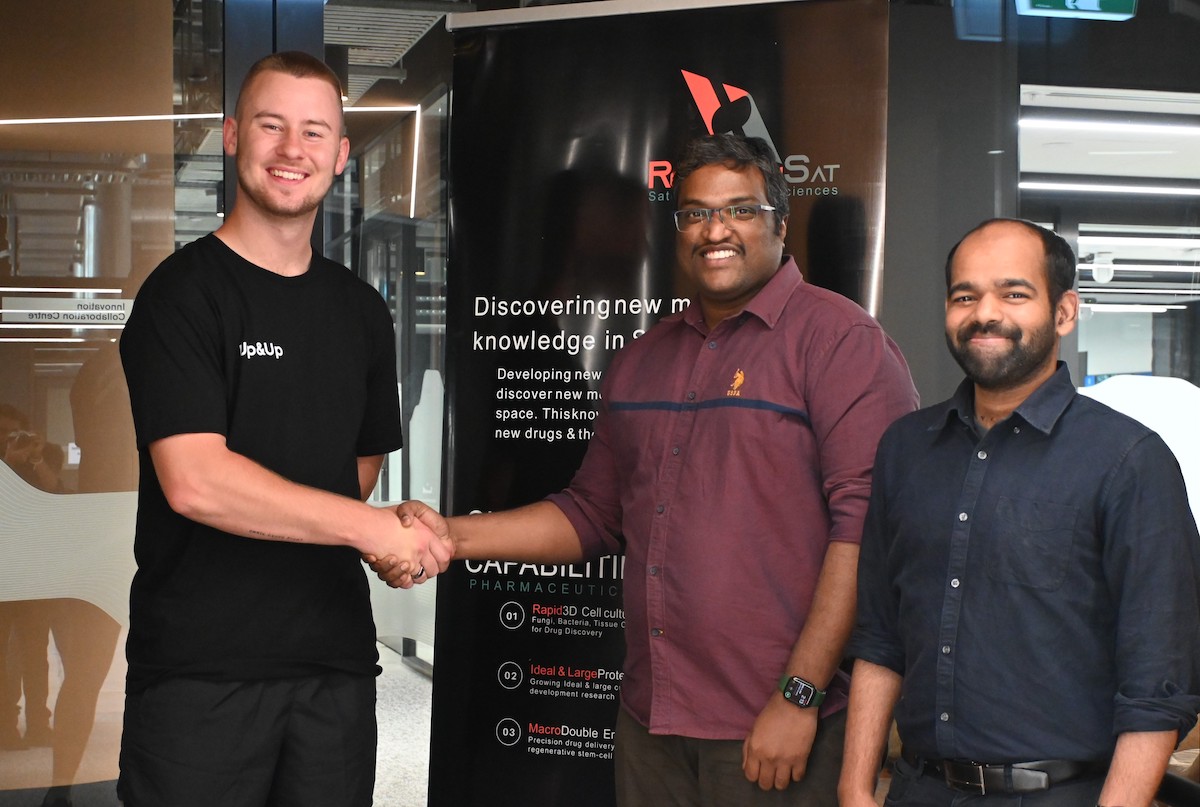
L-R: Up&Up founder Austin Lovell with ResearchSat co-founders RaviTeja Duggnini (CEO) and Jibin Jeffrey Dhanaraj (CTO). Photo: Supplied.
Now, ResearchSat will press on with its innovative microbiology research in space, buoyed by this latest deal. The co-founders told InDaily that their first priority was working on antimicrobial resistance research following the acquisition, the details of which were undisclosed.
“Antimicrobial resistance research is a fancy way of saying antibiotic resistance research,” explained CEO Duggnini.
“We are running out of antibiotics with these newly developed microbes – they are mutating at a much faster rate. We want to have counter strategies on how we can adapt and control the microbes.”
With this in mind, ResearchSat is occupied with researching the effect of microgravity – the weightlessness astronauts experience while in space – on microbes.
This is achieved by sending a sandwich-sized box into space, usually via a rocket launch. The idea was conceived whilst the pair were completing their Masters in the field of aerospace engineering.
“We wanted to see what else we could do with space other than looking down on Earth,” Duggnini said.
“Then we developed the advanced microhabitat that can withstand the loadings during the launch. In that project we tested bacteria hosted within a microhabitat – a sandwich-sized box – which has an advanced microfluidic chip within it which hosts the microbes.
“We have other electronics attached to it to monitor the environment variables and then we ran tests on them and subjected them to various harsh conditions to see their survivability. That was validation for us – we were able to sustain microbes within our microhabitat.”
This initial research led to the pair establishing ResearchSat formally in 2018 which was bootstrapped for three years until their first client was secured.
“He was interested in drug delivery research in space,” Duggnini said.
“Then we built our first satellite and launched it last year.”
ResearchSat’s first space foray
ResearchSat’s first real space launch happened last year, with the company partnering with a client and RMIT University to send a payload 260kms into space.
Launched from Sweden, this expedition saw ResearchSat also run one of its own experiments whereby the team sent yeast into space to see how it would adapt to microgravity.
“Interestingly we found out that it adapted to space even within the six minutes of microgravity,” Duggnini said.
“The cell size decreased but the population increased four times. Interestingly, there was a formation of a biofilm on it – their defence mechanism – and we want to analyse what triggered it and what is the quality of biofilm compared to on Earth.
“We were not expecting that much variation in just six minutes.”
Duggnini said this experiment gave the team insights into how microbes adapt in harsh environments.
“We inherently carry a lot of microbes in our body. When the astronauts go into space, they adapt into that,” Duggnini said.
“The reason why it is forming the biofilm and even the properties of the biofilm for that harsh environment means we get new insights and new chemicals which can address some of the issues.”
The company’s research satellite contains experiment chambers which can be swapped in and out, and they can operate independently of one another – “something like an airline of payloads” according to CTO Dhanaraj.
“That’s one of the major design philosophies we are trying to follow, is to miniaturise and optimise all the experiments so we can put them into different chambers. Then that is scalable,” he said.
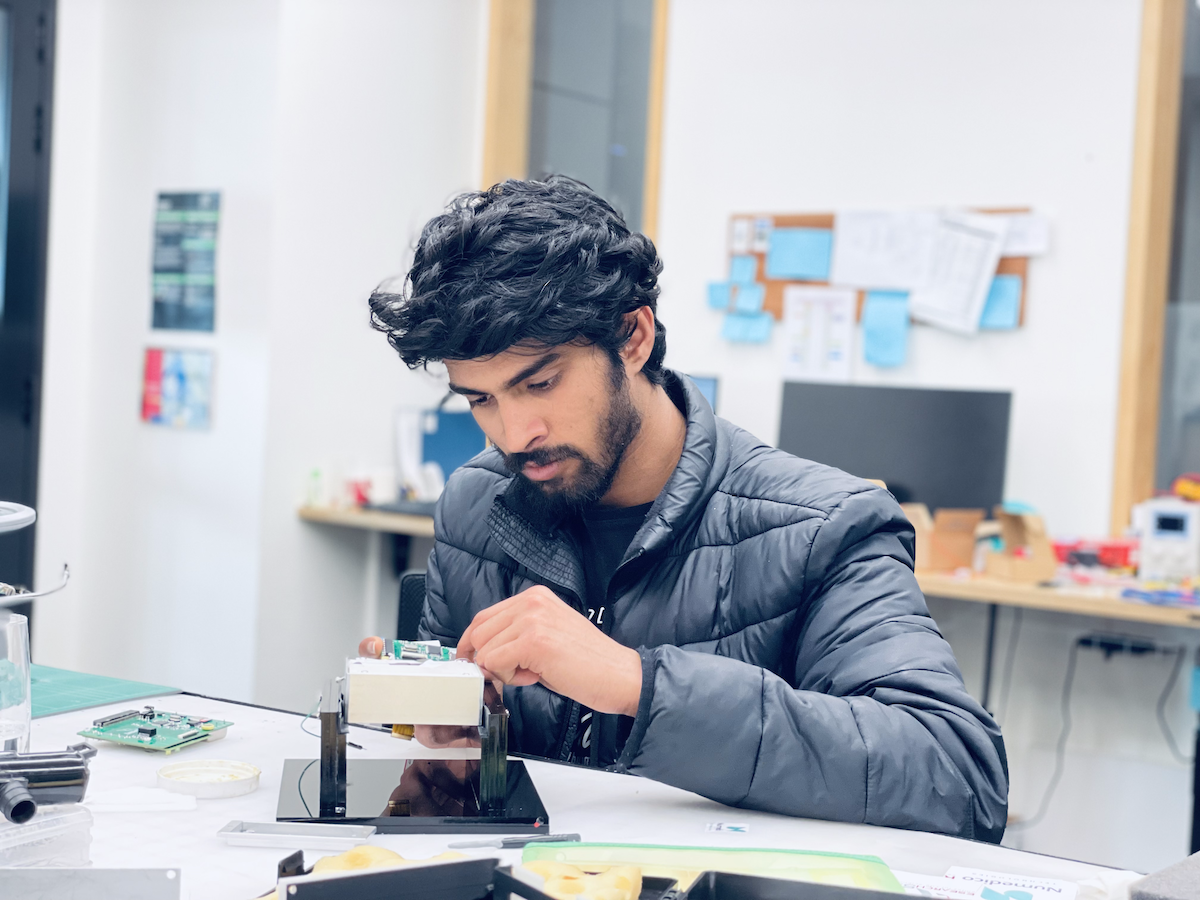
ResearchSat electronics engineer Rahul Sathiyamoorthi. Photo: Supplied.
“Everyone can be a part of it – it’s becoming more accessible to everyone from researchers to pharmaceutical companies.”
Previously, the ResearchSat co-founders said access to space for experimental research of this kind was locked off to pharmaceutical giants.
“One of the examples of that pharmaceutical research done in space is a drug known as Keytruda – it’s a cancer drug – and this was done by Merck and Co, one of the biggest pharmaceutical companies in the world,” Dhanaraj said.
“They embarked on specific types of experiments to be done in the ISS from which they collected the newly formed data that informed them to do better drug development here on Earth and build a better drug.
“One of the major things which we are trying to do is to conduct specific experiments and research in space, taking advantage of that unique environment, collect a lot more information and bring the samples and the data down which will accelerate the drug development process which happens here on Earth. We’re building better drugs based on space research.”
Up&Up and away
Though not able to reach the heights of a proper rocket, Up&Up’s balloons give ResearchSat a new entry into space – one that they hope clients will want to take advantage of given it is cheaper and more accessible than a rocket.
“When researchers, our clients, get on board for space missions they would want to first scale it down and build some prototype systems which we can send on a balloon launch, get a few seconds of microgravity, then we go step-by-step,” Dhanaraj said.
“Next we’ll aim for a suborbital rocket launch which is what we did from Sweden last year, and then after that we go for low-Earth orbit missions and ISS missions.”
The balloons themselves launch from a site in Mount Barker. Once in the air, they reach an altitude of approximately 30-40kms before bursting and coming back down to solid ground via parachute.
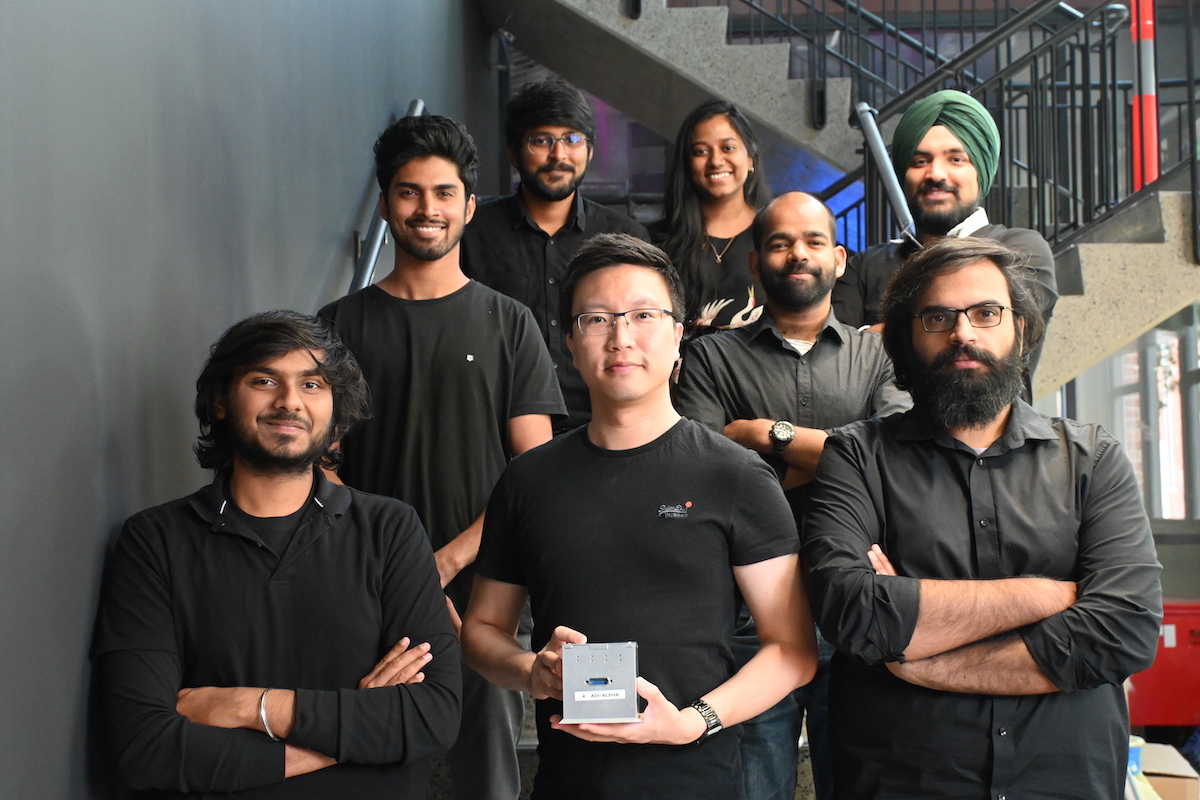
ResearchSat’s team of engineers. Photo: Supplied.
“Our previous balloon launch when we did it from Mount Barker – it ended up in Gawler,” Dhanaraj said, noting a tracking team would chase after the payload to collect it.
“They have antennas fitted on top of the car and tracking devices, so they’re constantly listening to the radio beeps coming from the payload and then following the trajectory.
“Obviously on the day, depending on wind conditions, we’ll get to see where does it actually go. As long as it doesn’t end up in the ocean, we can pick it up.”
Austin Lovell – the founder of Up&Up – spoke to InDaily from London via Zoom. Originally from Adelaide, the entrepreneur and founder of e-commerce scaling outfit Crafted is now based overseas – primarily in Dubai – where he is pursuing international clients.
He told InDaily that though Up&Up was designed with marketing clients in mind, he always knew the business was “multipurpose”.
“We created a way where you can launch into space a lot more cheaply and more consistently – you’re not having to wait half a year to win your mission,” he said.
“Overall, it worked out really well for everyone. The same tech applies – instead of just mounting a camera they could just mount their experiments which is really cool.”
The deal was also welcomed by South Australian Minister for Trade and Investment Nick Champion.
“This is a welcome addition to South Australia’s burgeoning space sector and another sign of growing investor confidence in our State,” Champion said.
“Our expertise and capabilities in hi-tech are world-class, and we are increasingly seeing more space companies attracted to our collaborative and innovative ecosystem.
“We are committed to supporting local talent, fuelling industry growth, and playing a key role in contributing to the nation’s sovereign capabilities.”



